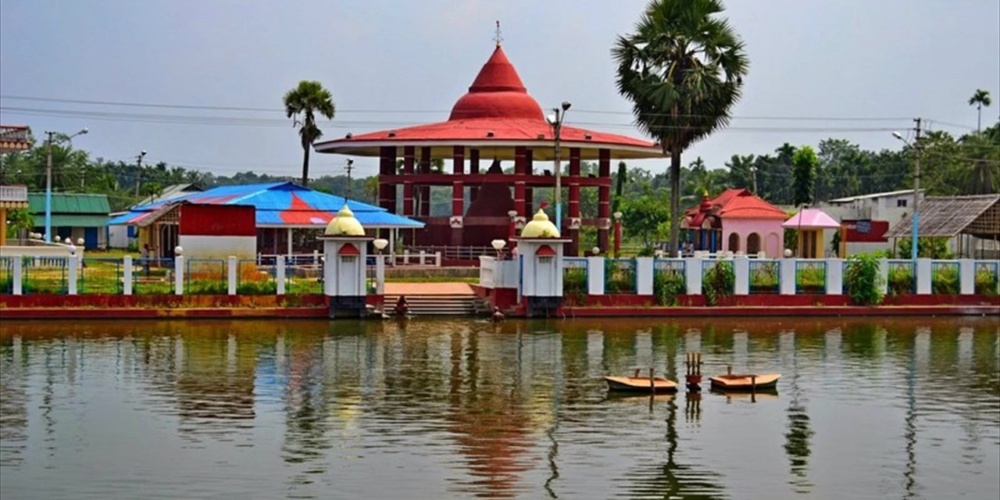

The Chouddo Devotar Temple, nestled in the verdant landscapes of Kailashahar in Tripura, India, is an ancient architectural ensemble that stands as a testament to the region's rich cultural and religious heritage. The temple complex is a significant religious site and has been a focal point for pilgrims and history enthusiasts alike, seeking to delve into the spiritual and architectural grandeur of India's past.
The name 'Chouddo Devotar', translating to 'Fourteen Deities', reflects the temple's dedication to fourteen gods revered within the Hindu pantheon. This spiritual site is enveloped by myths and historical facts that trace back to the royal era of the Tripuri kings, who were instrumental in the propagation of Hinduism within the region.
Despite the lack of precise records pinpointing the construction date of Chouddo Devotar Temple, it is widely believed that the temple dates back several centuries and has been an integral part of the religious landscape of Tripura. Over time, the complex has faced the ravages of time and weather but stands resilient, attracting tourists from across the country and beyond.
The history of tourism at Chouddo Devotar Temple began with the local devotees and soon caught the attention of travelers seeking the off-beat and spiritually enriching experiences of India's northeastern states. The Tripura Government, acknowledging the potential of the temple to attract visitors, has taken measures to improve accessibility and facilities in Kailashahar, thereby facilitating the growth of tourism.
In recent times, tourism in Tripura, and especially in religious sites like the Chouddo Devotar Temple, has seen an increase in interest due to improved infrastructure and the promotion of cultural heritage. The temple serves not only as a religious site but also as a mirror to the past, showcasing intricate carvings and architectural designs.
In line with the global shift towards experiential and sustainable tourism, visitors to Chouddo Devotar Temple now seek more than just sightseeing. Tourists are increasingly interested in the historical narrative, local customs, and the surrounding natural beauty. They engage with local guides who provide insightful stories and facts about the temple's history, emphasizing an immersive experience.
Moreover, activities such as the Kharchi Puja, which is a prominent festival celebrating the fourteen deities of Chouddo Devotar, have become focal points in attracting cultural tourism. During this time, tourists flock to the temple, providing a boost to the local economy and promoting community-based tourism.
Sustainable tourism practices are also becoming increasingly important. The local authorities and tourism developers now focus on preserving the temple's integrity, promoting eco-friendly visits, and ensuring that the influx of tourists does not harm the site's preservation.
The advent of digital media and social networking has played a significant role in highlighting Chouddo Devotar Temple to broader audiences. Online campaigns and virtual tours have become powerful tools in showcasing what the temple and Kailashahar have to offer, evolving how people discover and experience this historical location.
As tourism continues to flourish, Chouddo Devotar Temple is emerging not only as a spiritual haven but as a beacon of Tripura's commitment to showcasing its history and culture to the world, paving the way for responsible explorations and deep connections with the land and its stories.